June 15: Ghost Town
1923. Two thousand residents of the Greek Christian town of Kayakoy, Turkey, are forced to evacuate their homes and move to Greece. Turkish residents in Greece are forced to move to Turkey, but they do not move into Kayakoy. The old homes still lie abandoned, partially crumbled by the ravages of nature, including an earthquake in 1957.
Why did the Greek-Turk population exchange happen? The Greeks fought the Turks from 1919-1922, a war won by the Turks and that led to the establishment of the current Turkish democracy. A lot of people's lives were disrupted, and not just by the war itself. As part of the treaties signed in January 1923, the Convention Concerning the Exchange of Greek and Turkish Populations forced 1.5 million Greek Orthodox Christians to move to Greece and 500,000 Muslims to move to Turkey. This uneven exchange left towns like Kayakoy abandoned.
Today, an effort is being made to restore parts of Kayakoy, to preserve it as a museum. Tourism helps this effort, and I don't mind being part of the project. We get to wander the streets of this ghost town this afternoon and wonder about the strange side effects of war.
The gulet drops us at Fethiye and we take our bus a bit inland to the ghost town. Here is the sign at the entrance to the village:
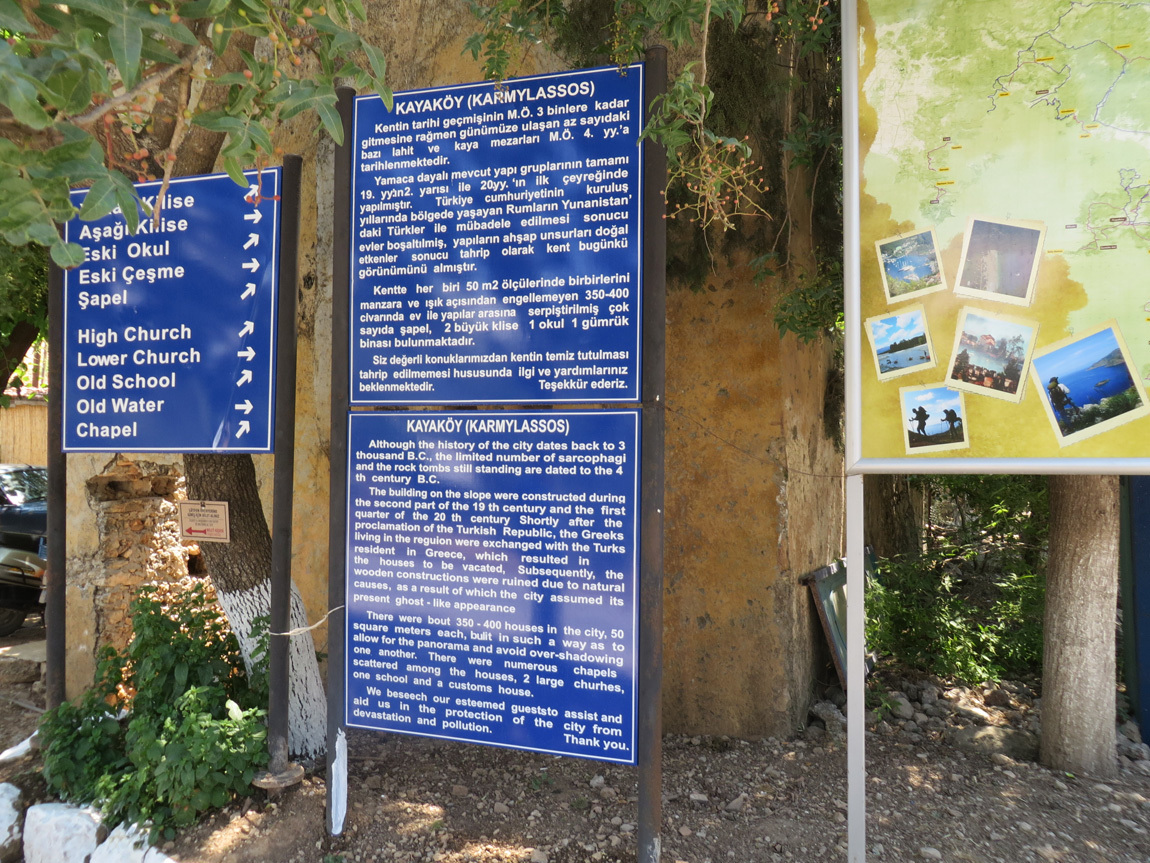
The sign reads (edited by me for grammatical errors):
Kayakoy (Karmylassos)
Although the history of the city dates back to 3 thousand B.C., the limited number of sarcophagi and the rock tombs still standing are dated to the 4th century B.C.
The buildings on the slope were constructed during the second part of the 19th century and the first quarter of the 20th century. Shortly after the proclamation of the Turkish Republic, the Greeks living in the region were exchanged with the Turks resident in Greece, which resulted in the houses to be vacated. Subsequently, the wooden constructions were ruined due to natural causes, as a result of which the city assumed its present ghost-like appearance.
There were about 350-400 houses in the city, 50 square meters each, built in such a way as to allow for the panorama and avoid over-shadowing one another. There were numerous chapels scattered among the houses, 3 large churches, one school and a customs house.
We beseech our esteemed guests to assist and aid us in the protection of the city from devastation and pollution.
Thank you.
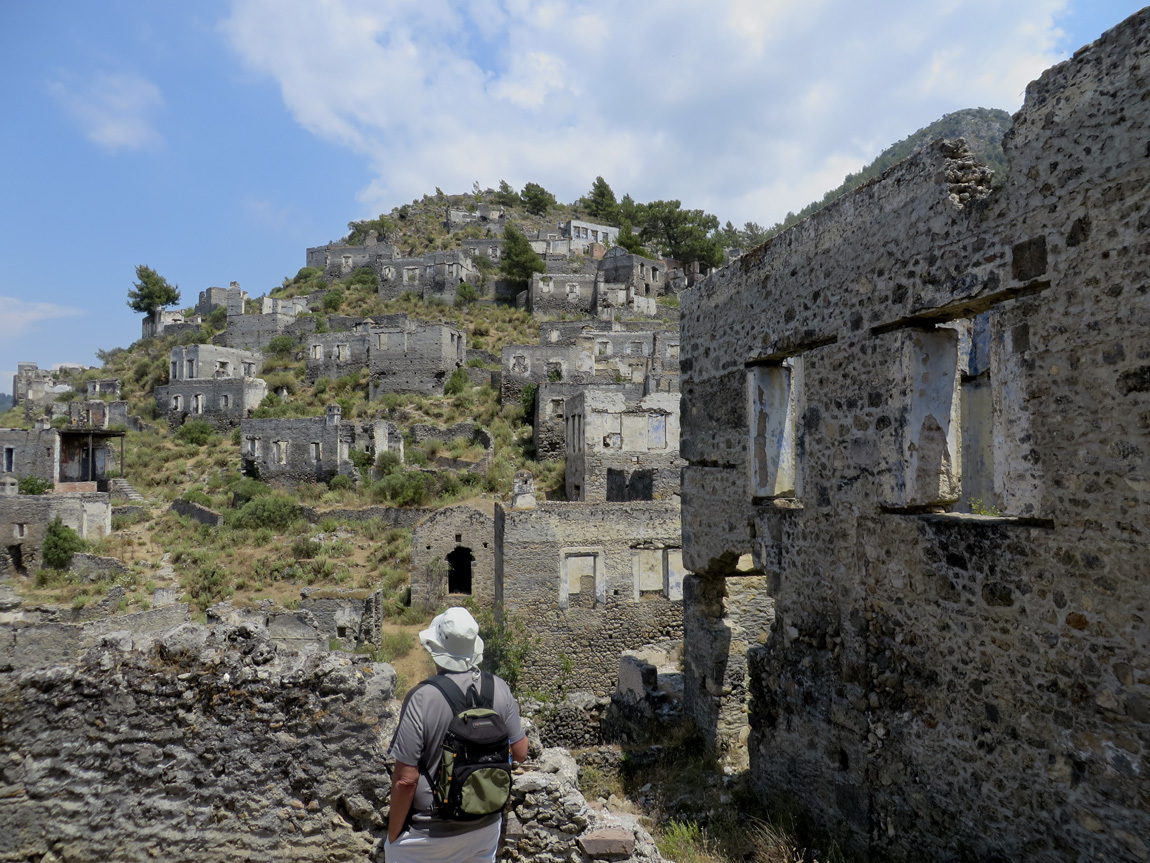
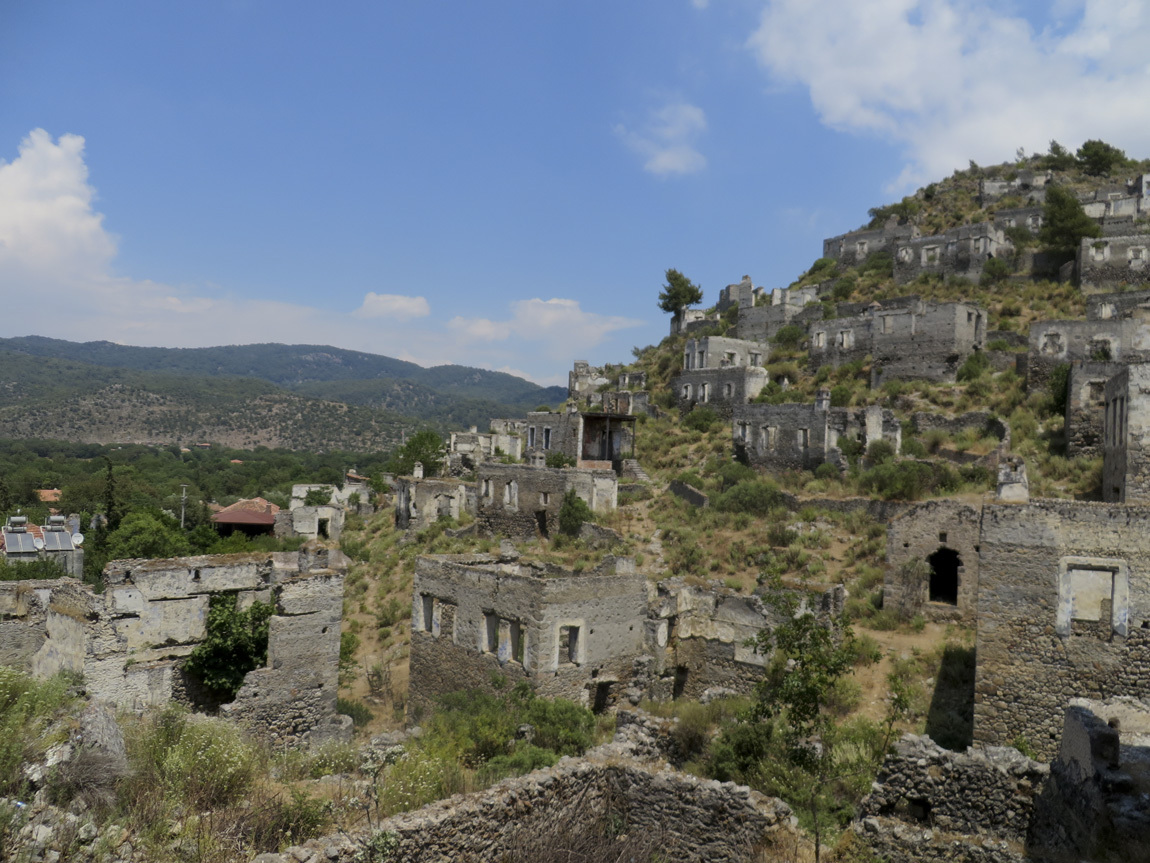
This photo shows solar panels on top of one of the houses. A few people do live in the old homes.
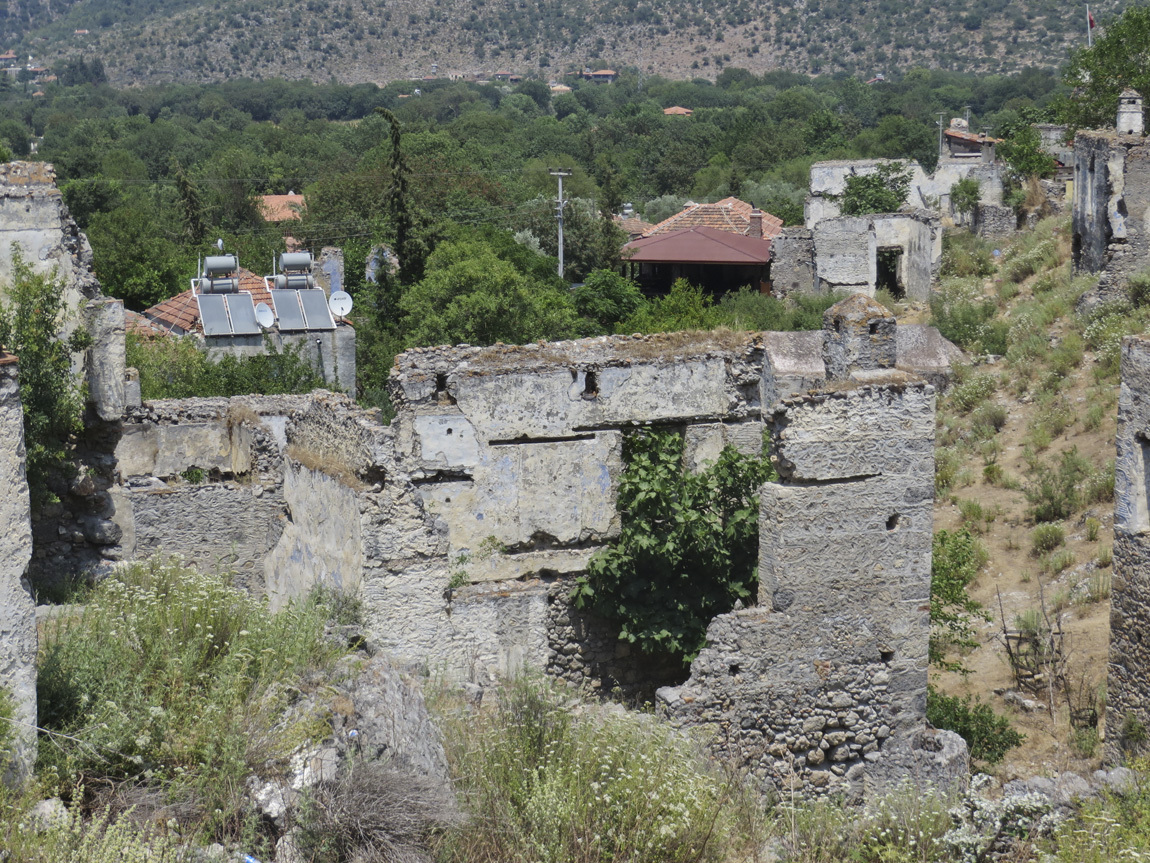
One of the homes.
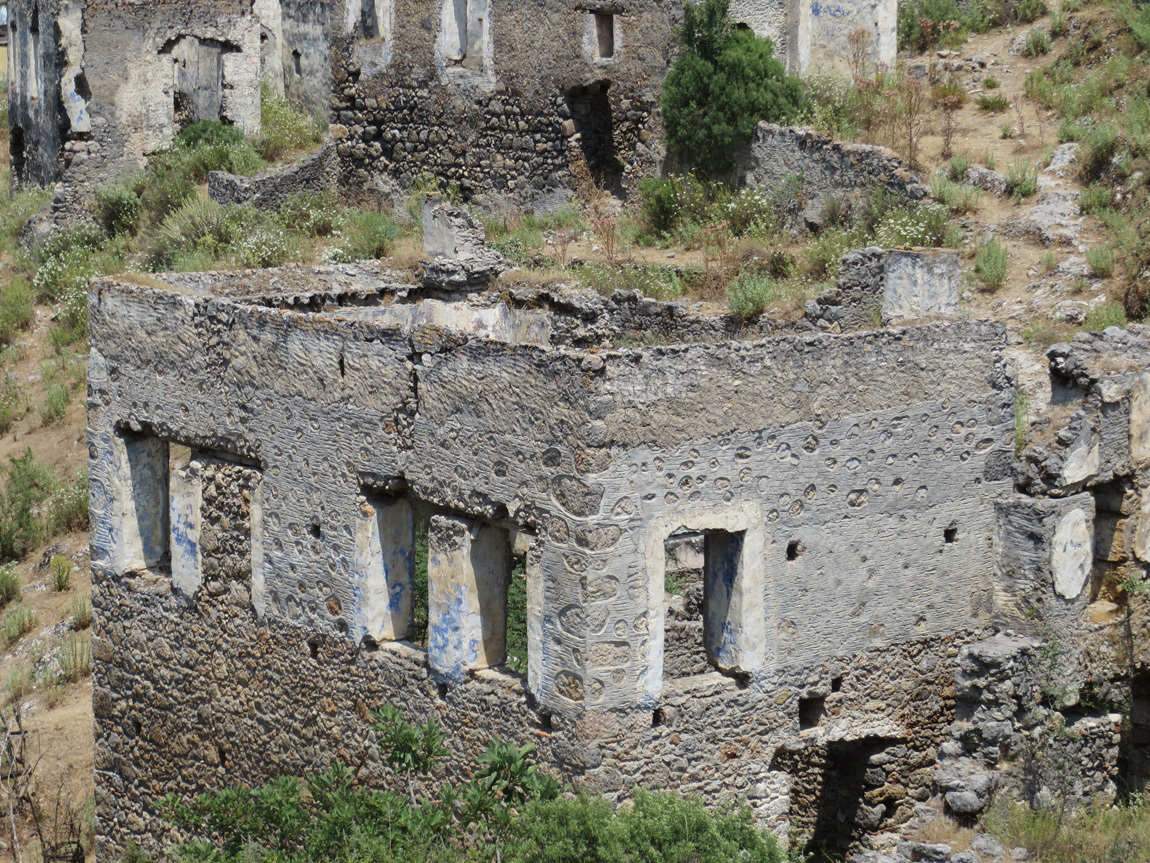
Look at the amazing details on this home, the faded blue fresco and the designs in the plaster.
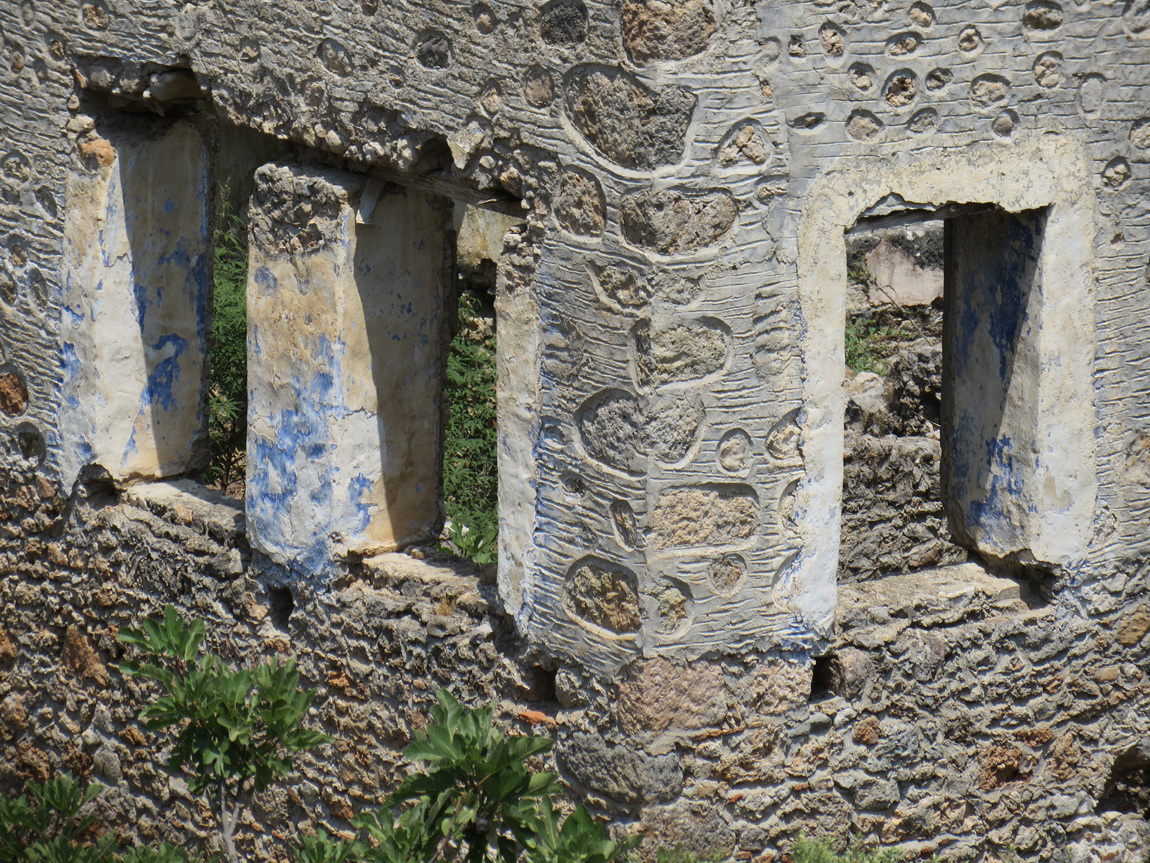
A church.
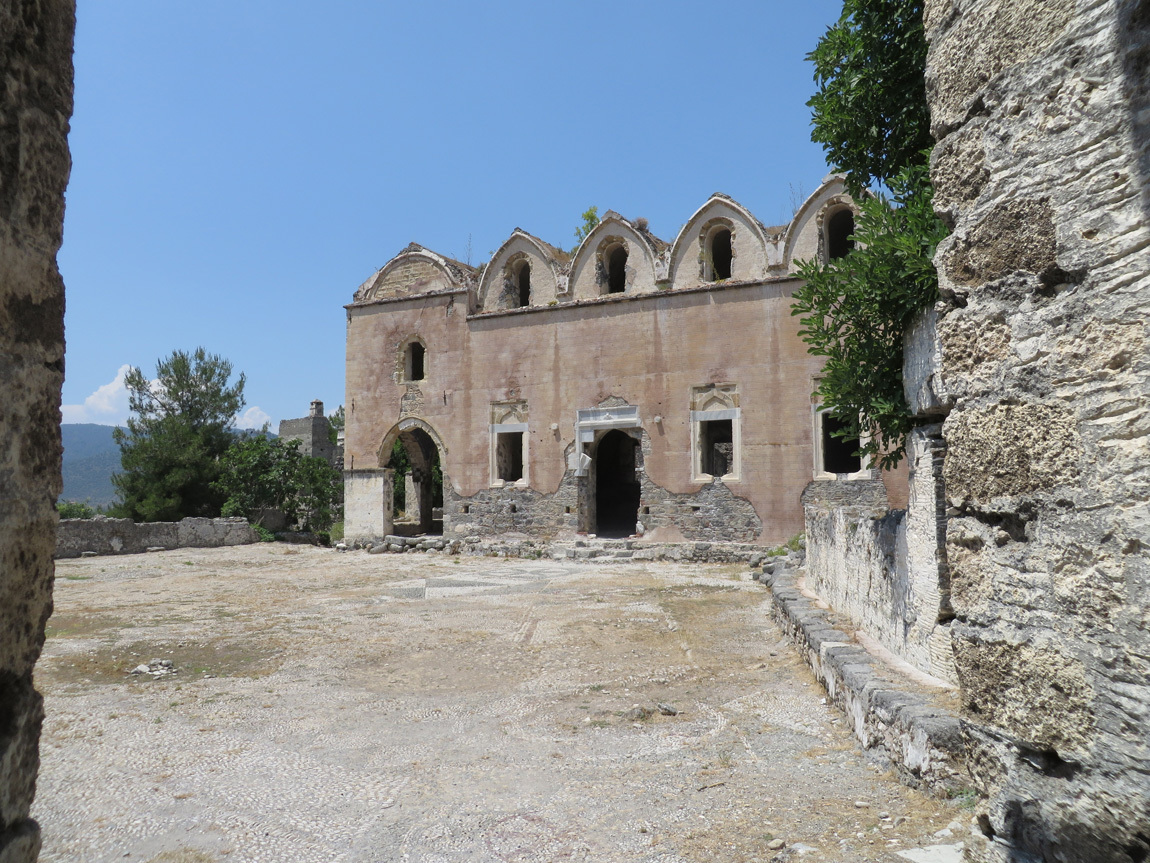
Ruins of homes.
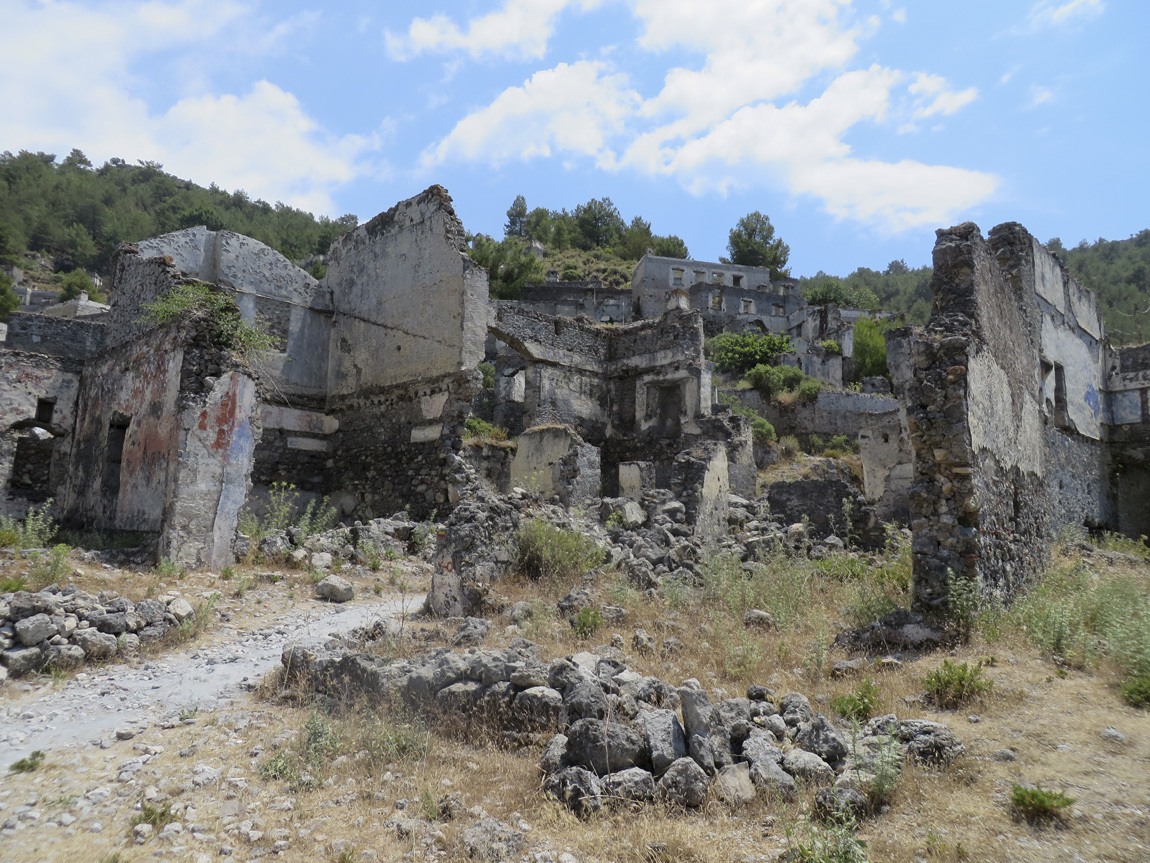
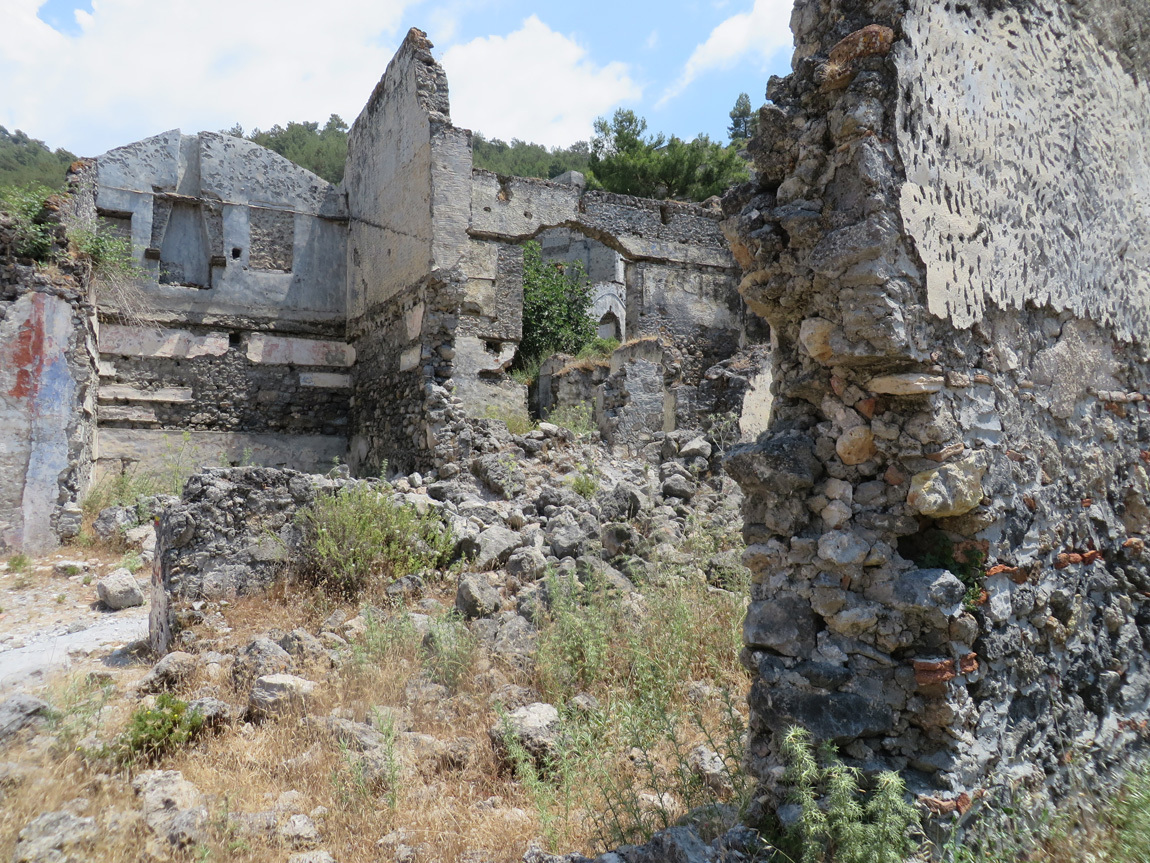
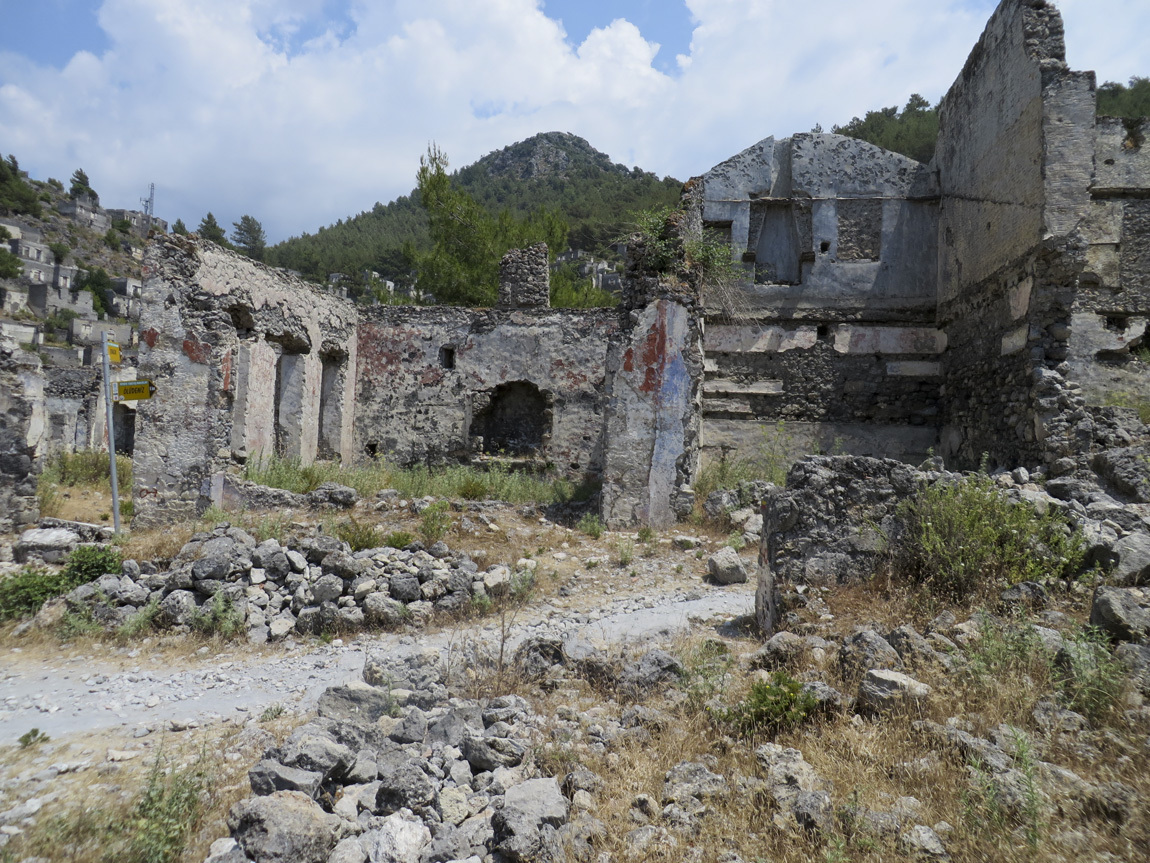
More views of the town. I couldn't get enough of these views.
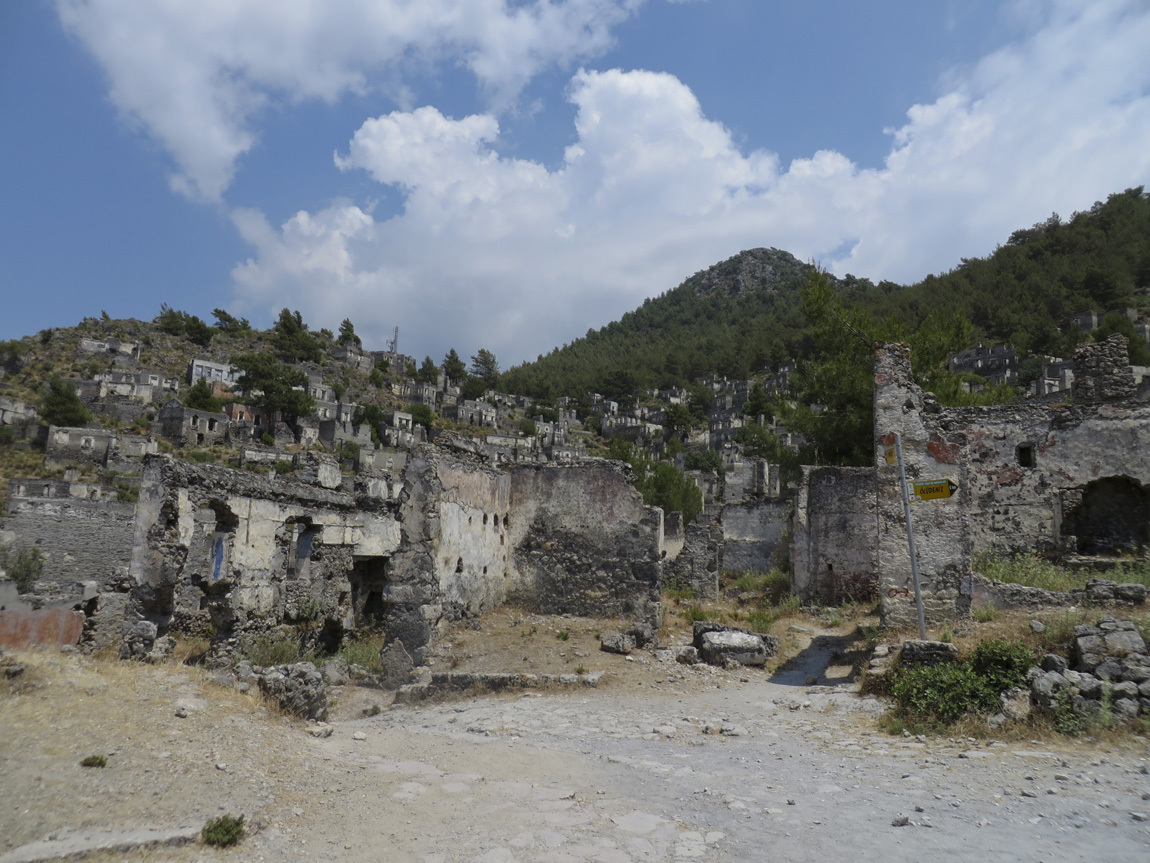
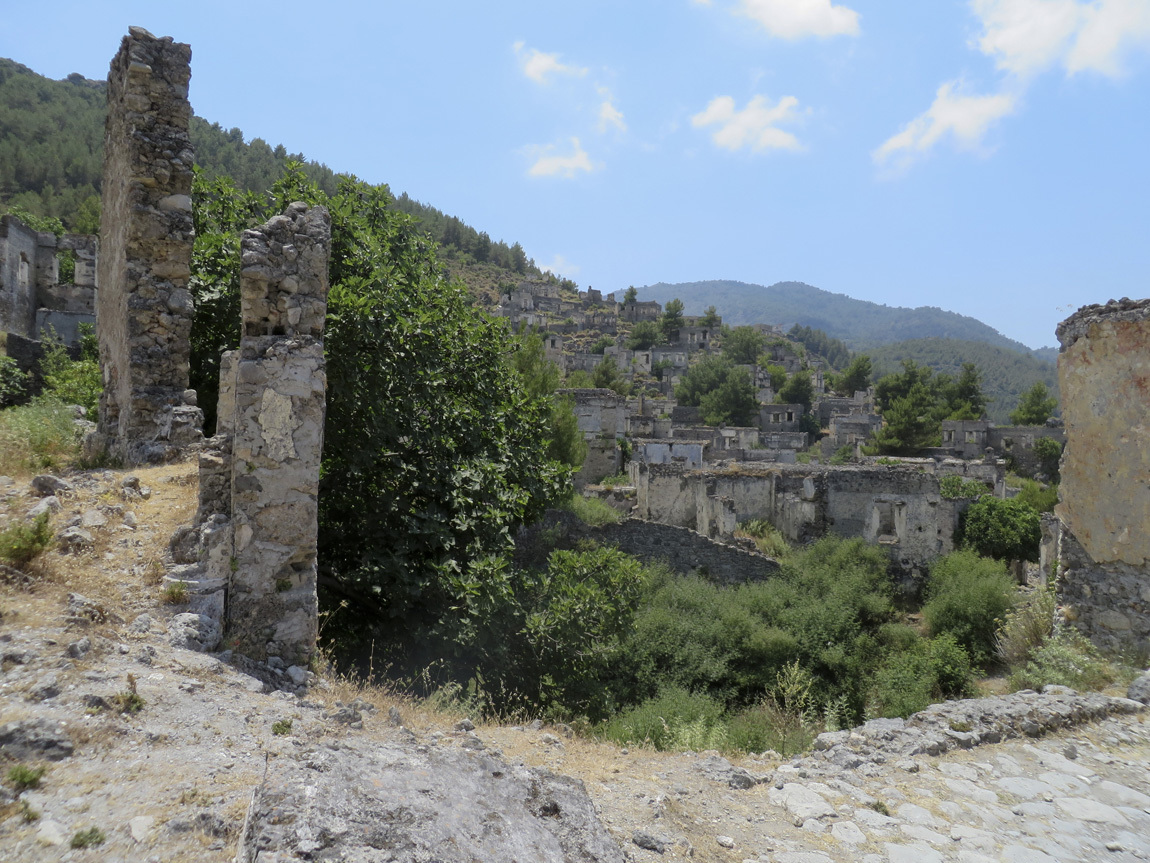
This house shows what remains of blue and orange frescoes.
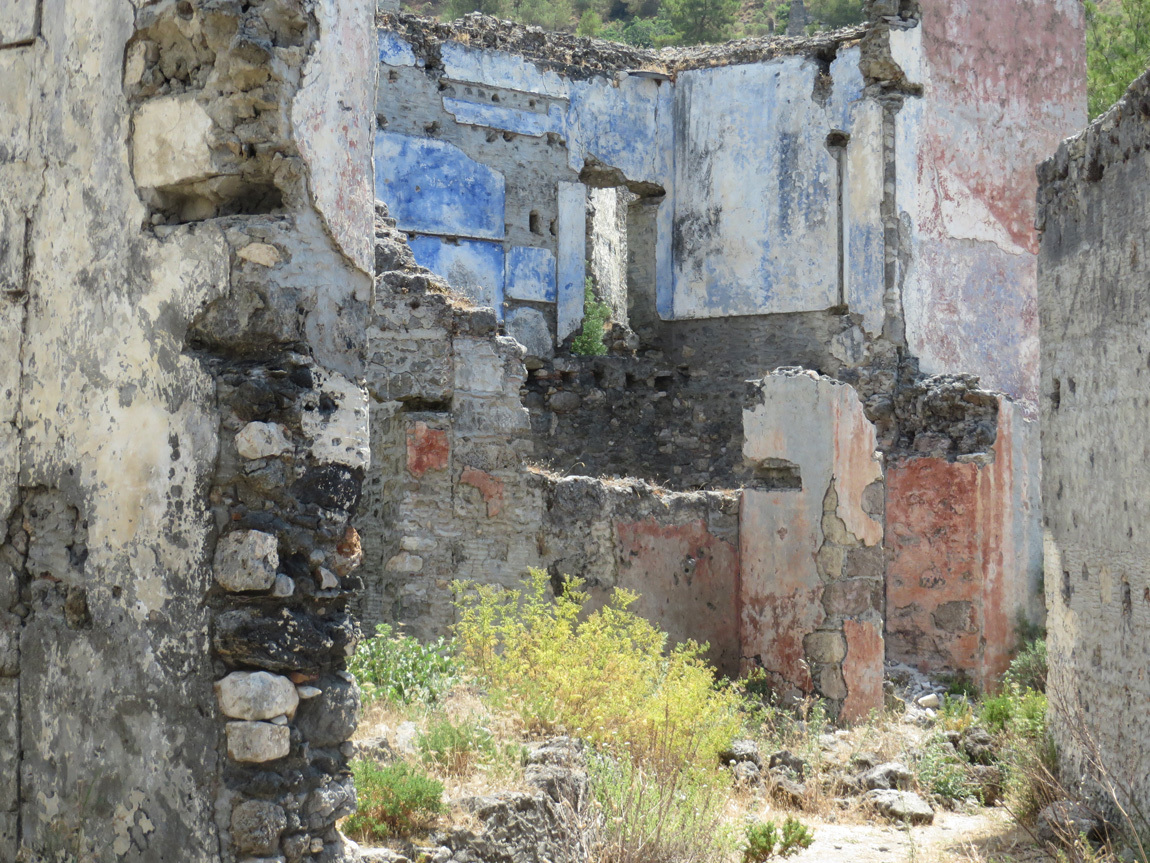
A tree growing right out of the stone wall of a house.
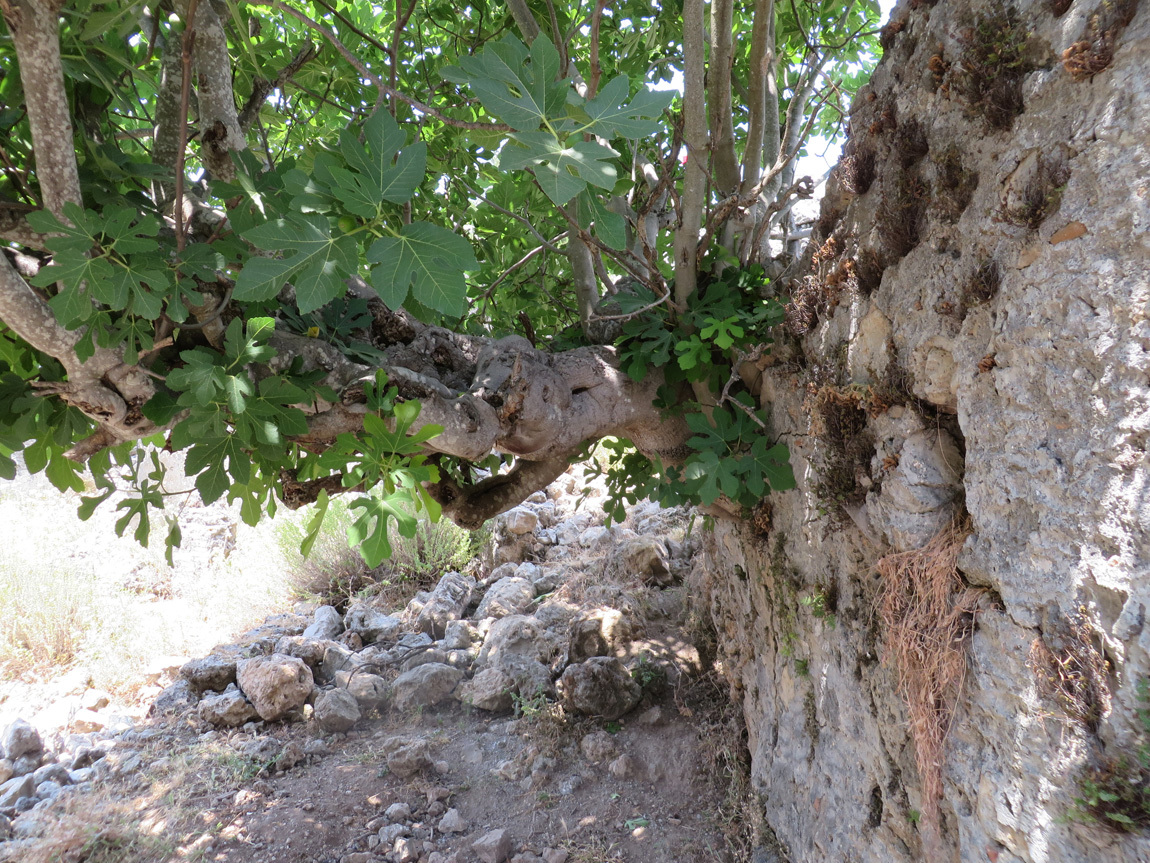
A hundred years ago, these steps felt the feet of a family walking in and out to the market, to visit friends, to share meals, to meet their lovers, to care for their aging parents.
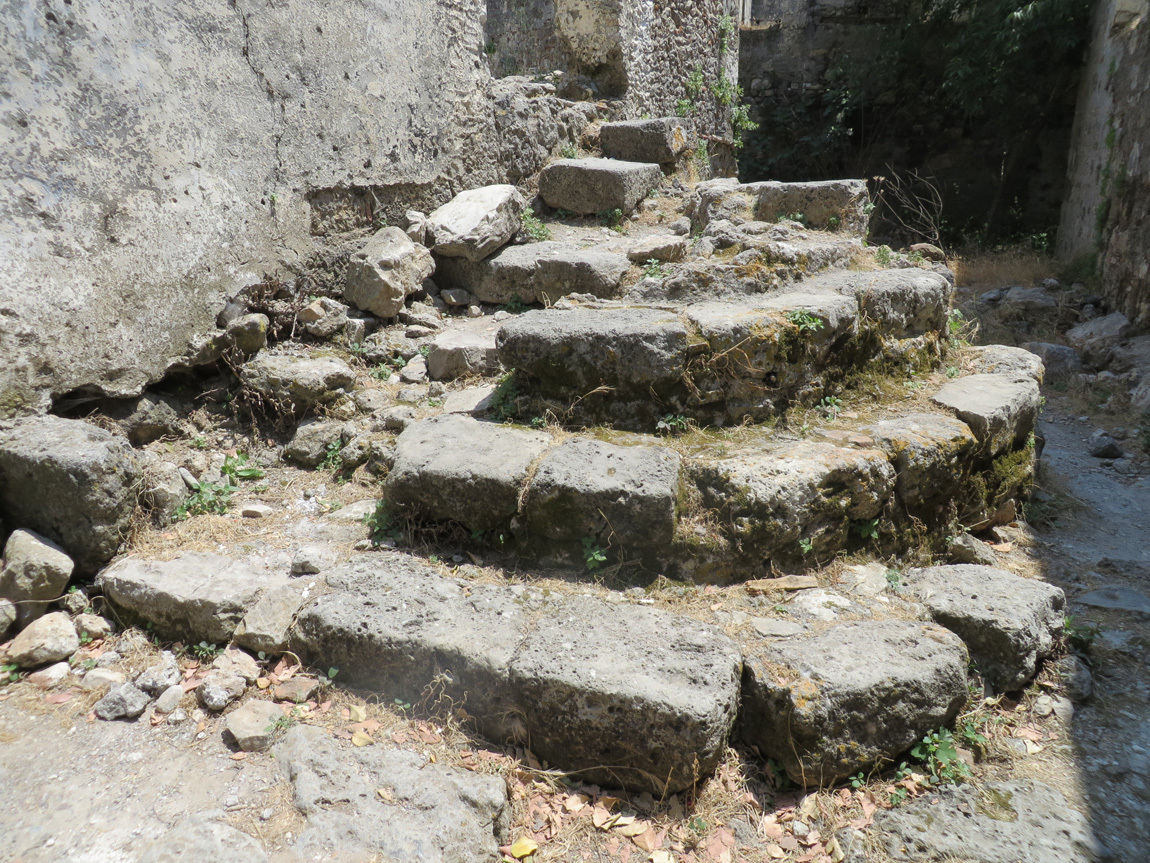
Power lines have come to this old village.
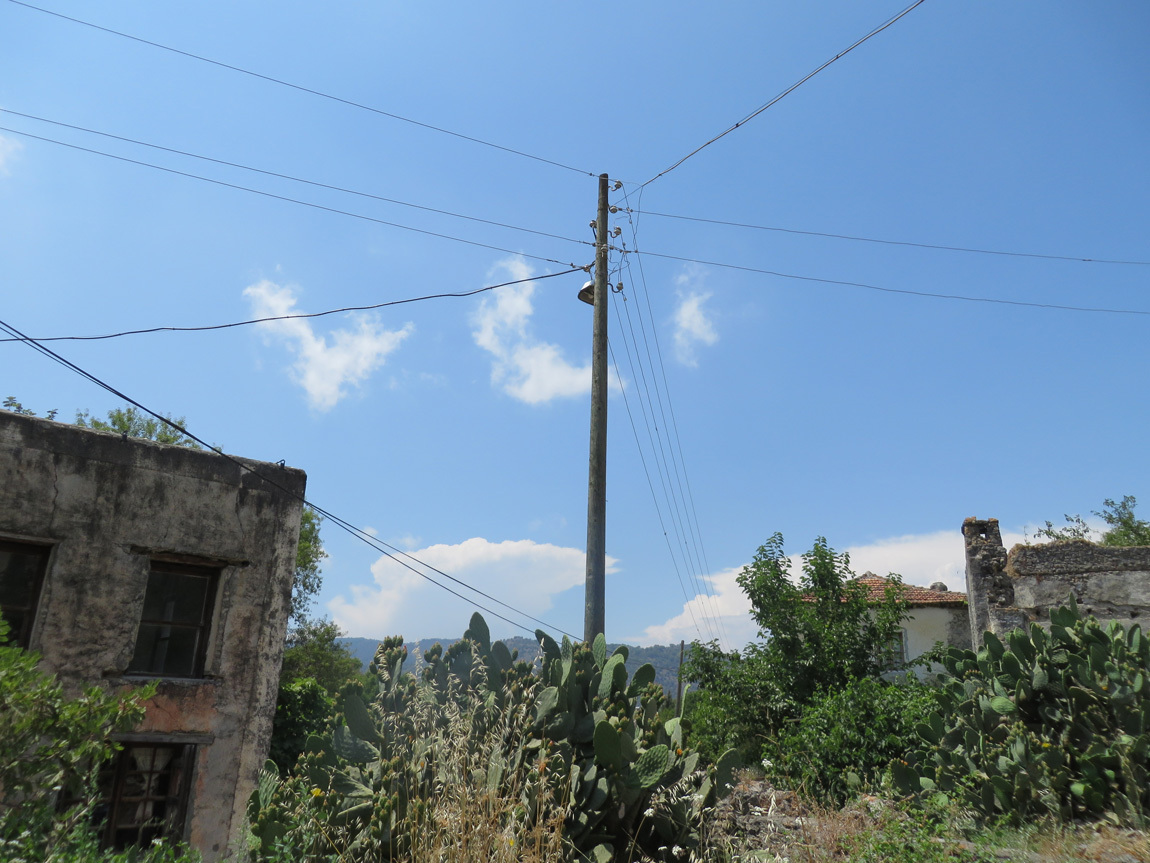
This is one of the houses that someone lives in.
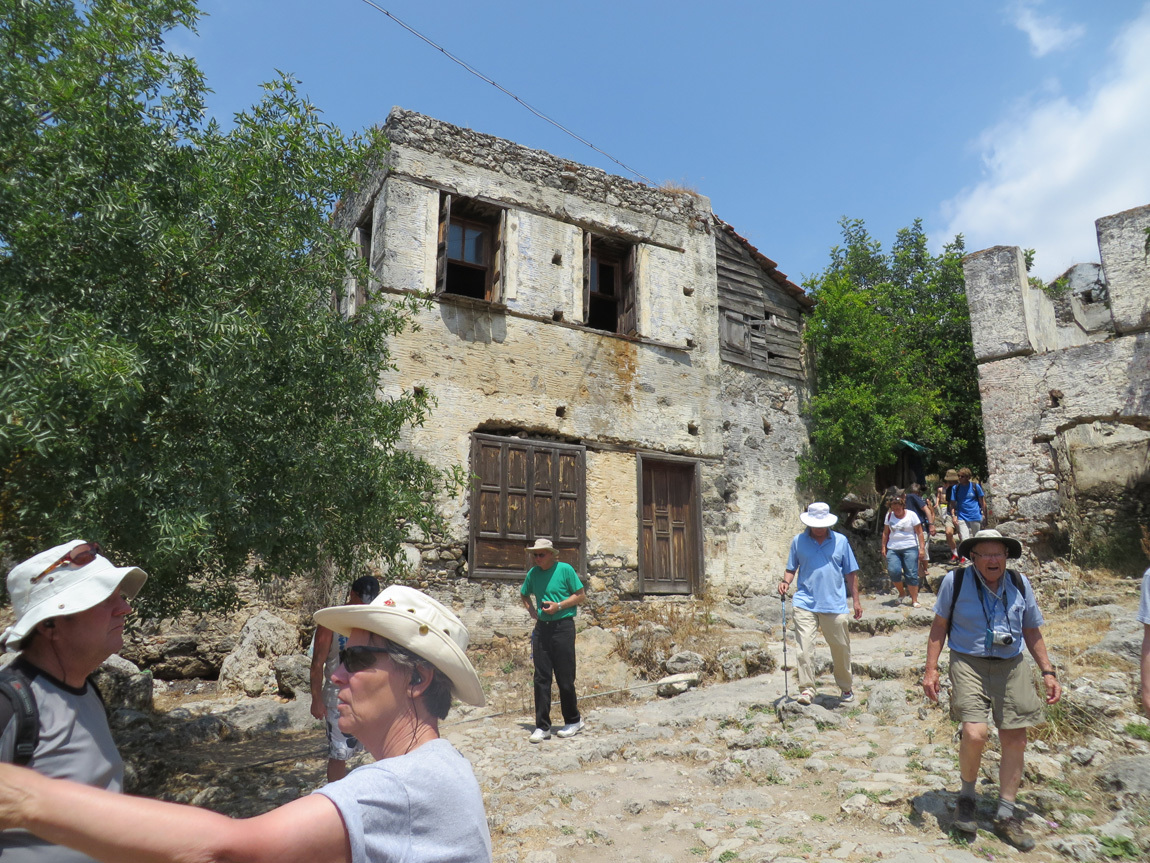
At the end of the tour through the village, a group of camels. Why? Don't know.
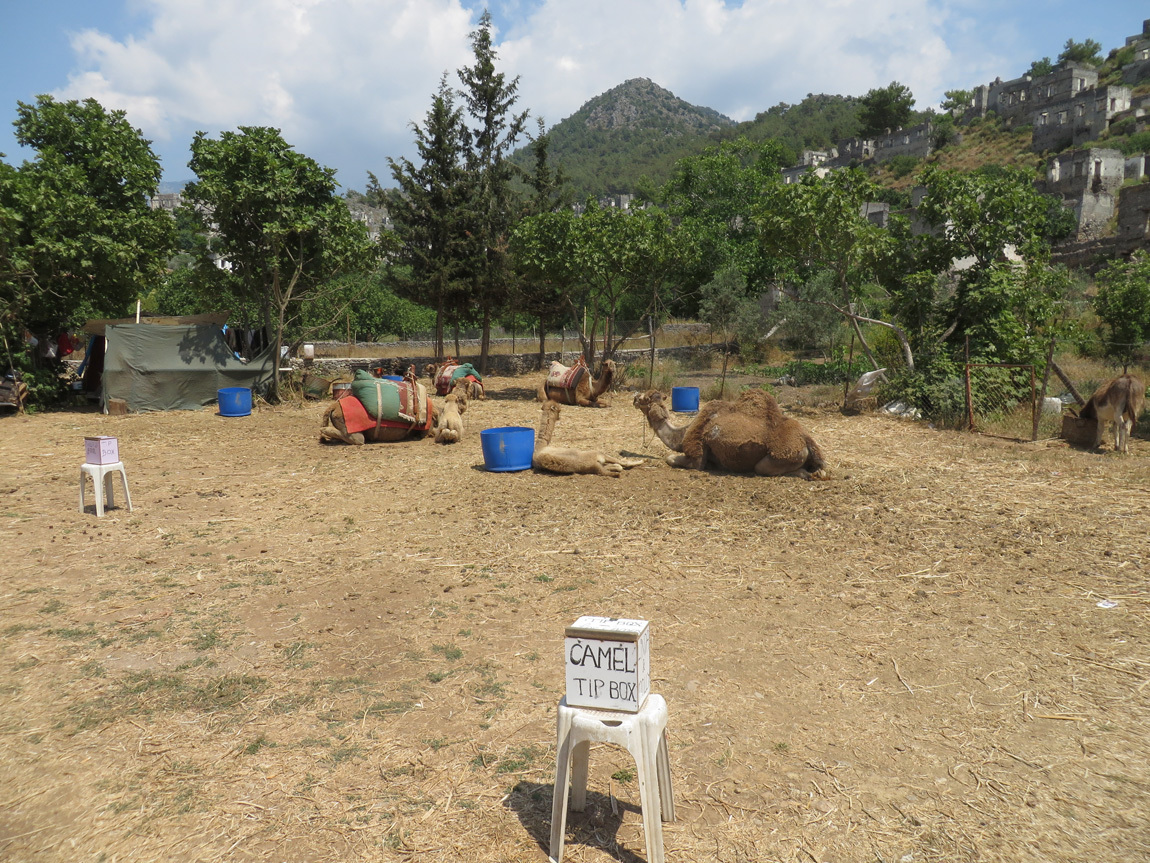
And the ever-present tourist shop.
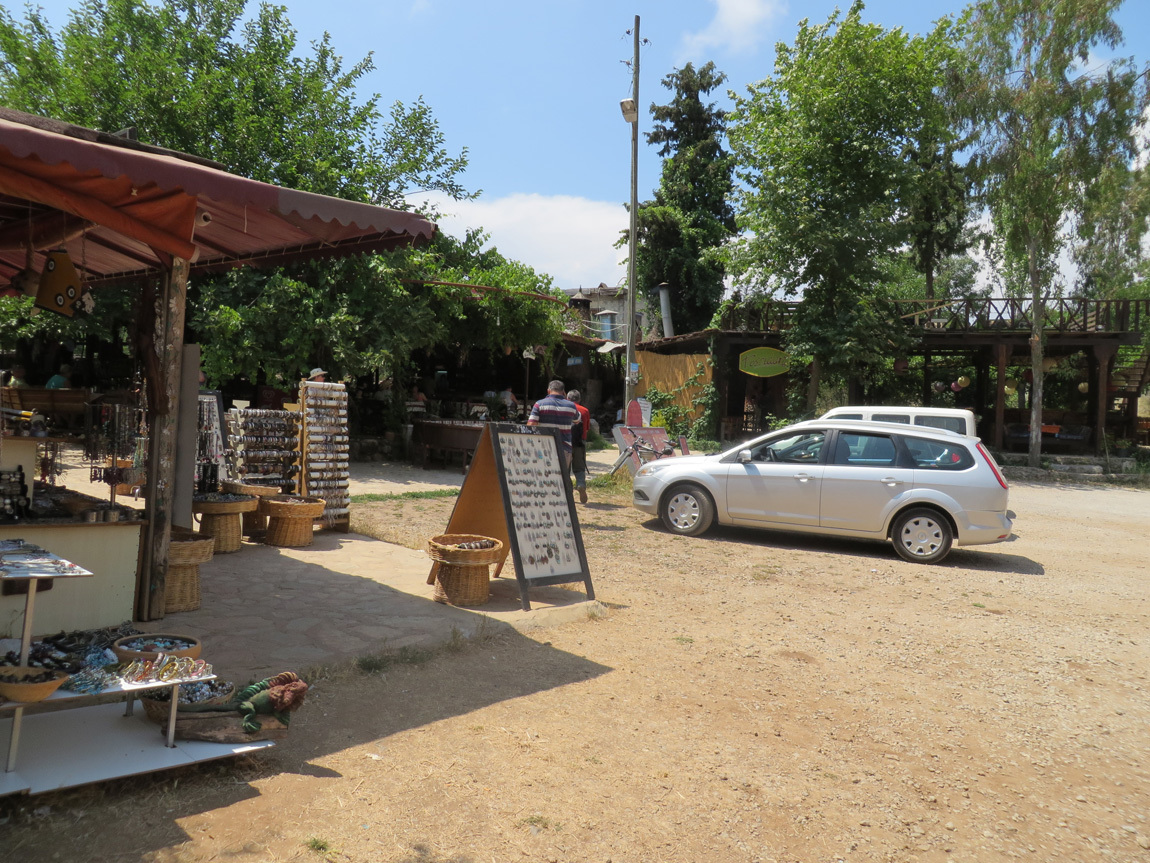
Close-up of some of the wares. Pretty and colorful.
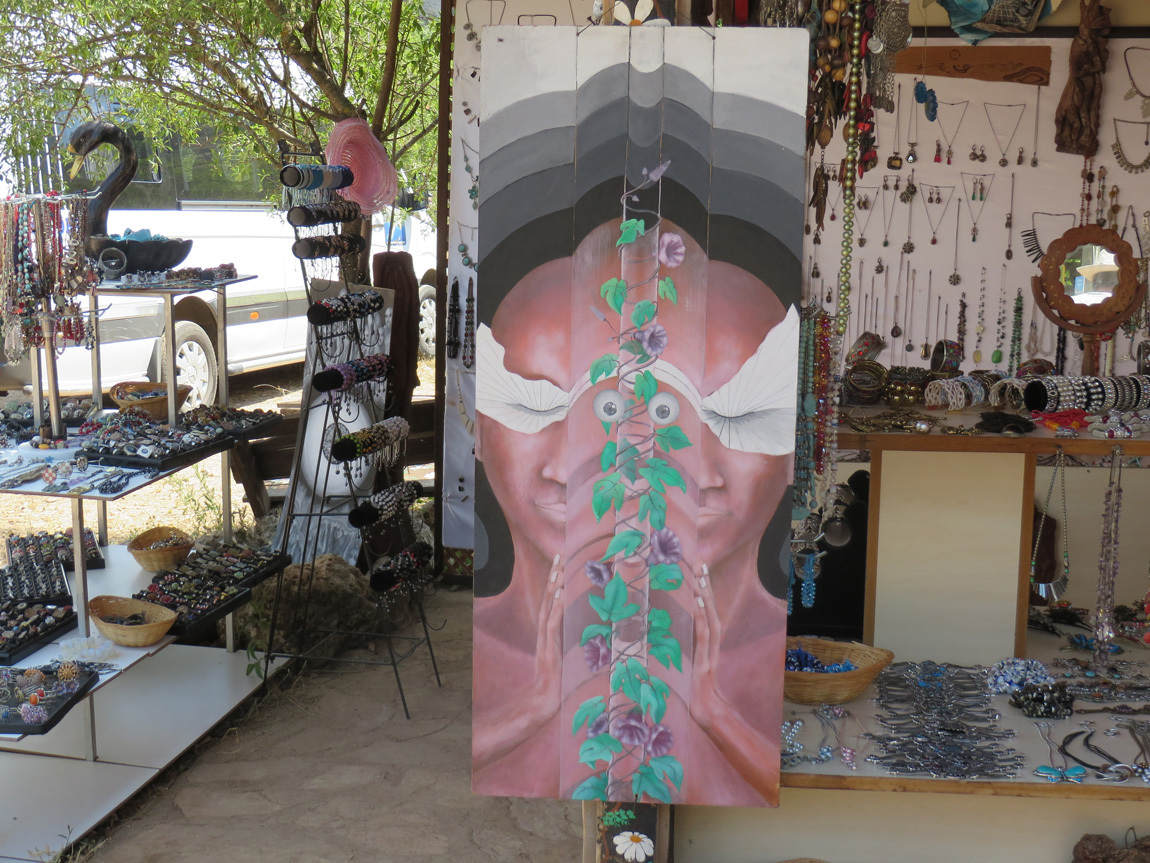
A few of our group hiked back down to the gulet, but we decided not to because we were told we had to wear long pants because of scratchy bushes. It was too dang hot for me to don long pants. So we walked back to the air-conditioned bus that took us to our gulet.
Navigation:
first Turkey post
next Turkey post
Why did the Greek-Turk population exchange happen? The Greeks fought the Turks from 1919-1922, a war won by the Turks and that led to the establishment of the current Turkish democracy. A lot of people's lives were disrupted, and not just by the war itself. As part of the treaties signed in January 1923, the Convention Concerning the Exchange of Greek and Turkish Populations forced 1.5 million Greek Orthodox Christians to move to Greece and 500,000 Muslims to move to Turkey. This uneven exchange left towns like Kayakoy abandoned.
Today, an effort is being made to restore parts of Kayakoy, to preserve it as a museum. Tourism helps this effort, and I don't mind being part of the project. We get to wander the streets of this ghost town this afternoon and wonder about the strange side effects of war.
The gulet drops us at Fethiye and we take our bus a bit inland to the ghost town. Here is the sign at the entrance to the village:

The sign reads (edited by me for grammatical errors):
Kayakoy (Karmylassos)
Although the history of the city dates back to 3 thousand B.C., the limited number of sarcophagi and the rock tombs still standing are dated to the 4th century B.C.
The buildings on the slope were constructed during the second part of the 19th century and the first quarter of the 20th century. Shortly after the proclamation of the Turkish Republic, the Greeks living in the region were exchanged with the Turks resident in Greece, which resulted in the houses to be vacated. Subsequently, the wooden constructions were ruined due to natural causes, as a result of which the city assumed its present ghost-like appearance.
There were about 350-400 houses in the city, 50 square meters each, built in such a way as to allow for the panorama and avoid over-shadowing one another. There were numerous chapels scattered among the houses, 3 large churches, one school and a customs house.
We beseech our esteemed guests to assist and aid us in the protection of the city from devastation and pollution.
Thank you.


This photo shows solar panels on top of one of the houses. A few people do live in the old homes.

One of the homes.

Look at the amazing details on this home, the faded blue fresco and the designs in the plaster.

A church.

Ruins of homes.



More views of the town. I couldn't get enough of these views.


This house shows what remains of blue and orange frescoes.

A tree growing right out of the stone wall of a house.

A hundred years ago, these steps felt the feet of a family walking in and out to the market, to visit friends, to share meals, to meet their lovers, to care for their aging parents.

Power lines have come to this old village.

This is one of the houses that someone lives in.

At the end of the tour through the village, a group of camels. Why? Don't know.

And the ever-present tourist shop.

Close-up of some of the wares. Pretty and colorful.

A few of our group hiked back down to the gulet, but we decided not to because we were told we had to wear long pants because of scratchy bushes. It was too dang hot for me to don long pants. So we walked back to the air-conditioned bus that took us to our gulet.
Navigation:
first Turkey post
next Turkey post
Comments
No comments yet
Add Comment